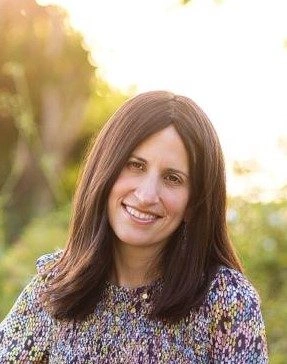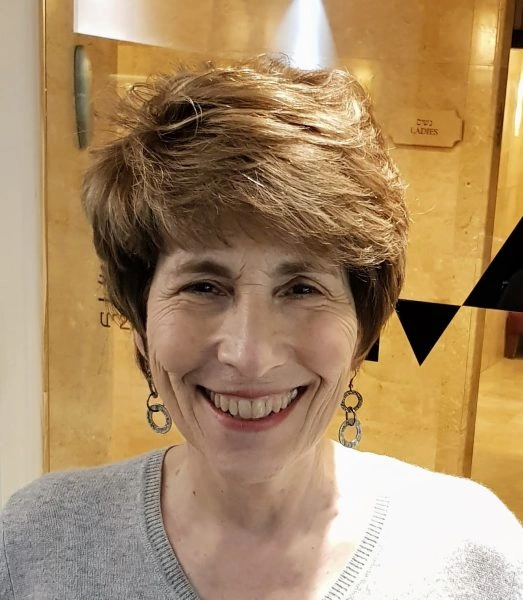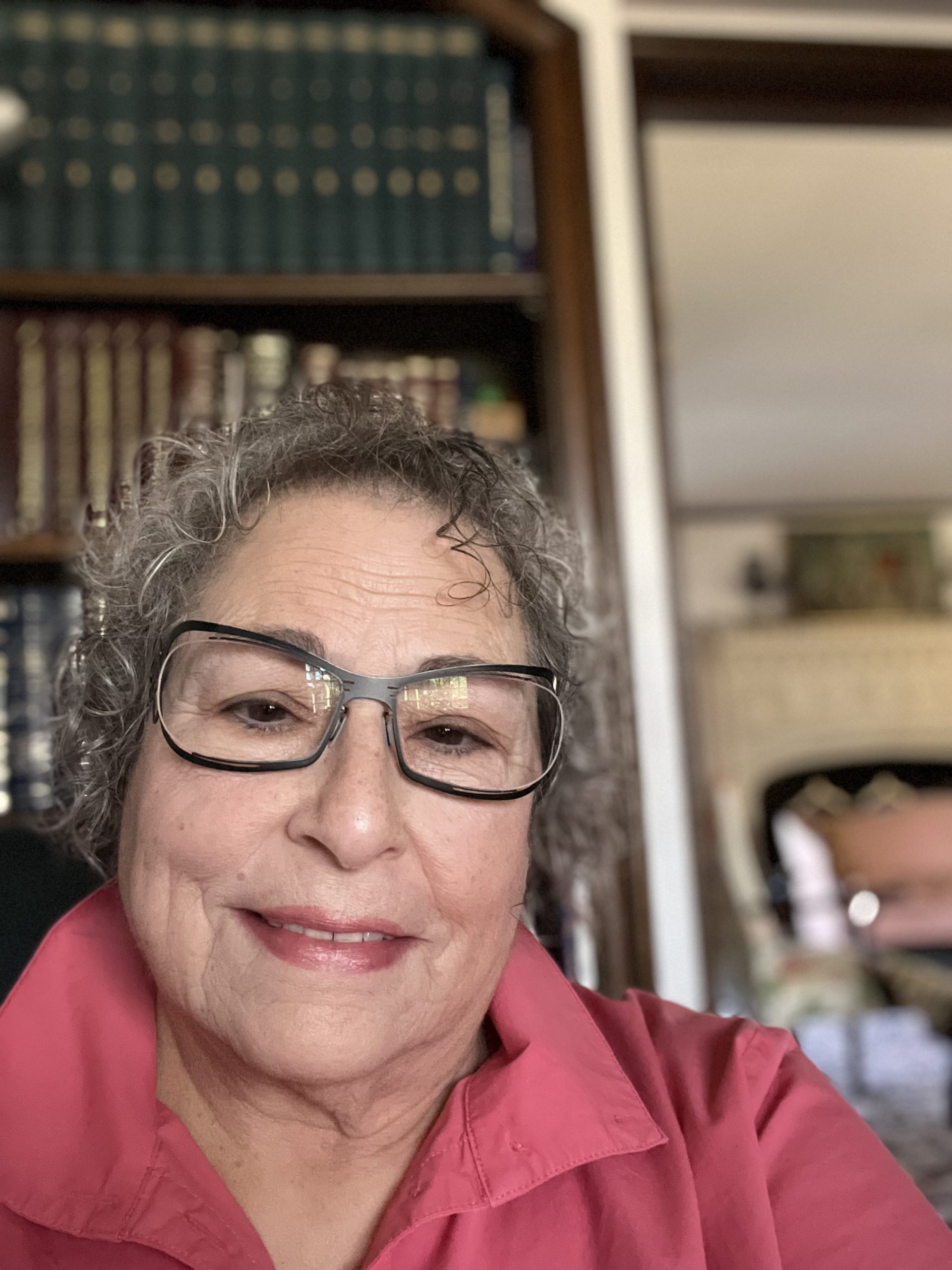Makkot 20
לוֹקֶה אַחַת.
he is flogged with one set of lashes, because he ate it without separating teruma of the tithe from the first tithe and is consequently liable for eating untithed produce. Had he separated teruma of the tithe, it would have been permitted for him to eat the entire fig, as it is permitted for a priest to partake of both teruma gedola and teruma of the tithe.
וְזָר שֶׁאֲכָלָהּ – לוֹקֶה שְׁתַּיִם. שֶׁאִילּוּ בַּתְּחִלָּה אֲכָלָהּ – אֵינוֹ לוֹקֶה אֶלָּא אַחַת.
And a non-priest who eats the fig is flogged with two sets of lashes, for both eating untithed produce and eating the teruma therein, which is forbidden for all non-priests. The baraita notes: As if the non-priest ate the fig initially, before separating teruma and tithes, he is flogged with only one set of lashes, for eating untithed produce. Once he separated the teruma and tithes, he is flogged for eating teruma as well.
טַעְמָא דְּאִיתֵיהּ בִּירוּשָׁלַיִם, הָא בִּגְבוּלִין – לוֹקֶה שָׁלֹשׁ, דְּאַף עַל גַּב דְּלָאו רוֹאֶה פְּנֵי חוֹמָה! דְּעַיְּילַי[הּ] וְאַפְּקַי[הּ].
The Gemara infers from the statement in the baraita: And it is a year when second tithe is separated and he is in Jerusalem, that the reason he is flogged with two sets of lashes is that he is currently in Jerusalem, where it is permitted to partake of second-tithe produce. But if he ate the fig in the outlying areas, outside of Jerusalem, and he designated second tithe in the fig, he is flogged with three sets of lashes. It is apparent that even if this second-tithe produce has not entered within the wall of Jerusalem, one is liable to receive lashes for its consumption. This contradicts Rabbi Yoḥanan’s opinion, as he holds that one is liable to receive lashes for eating second-tithe produce only if it entered Jerusalem. The Gemara answers: The case in the baraita is one where they took the fig into Jerusalem and then took it out of Jerusalem. That is why he is liable to receive a third set of lashes.
אִי הָכִי מַאי לְמֵימְרָא? הָכָא בְּמַאי עָסְקִינַן – כְּגוֹן דְּעַיְּילִינְהוּ בְּטִיבְלַיְיהוּ, וְקָסָבַר: מַתָּנוֹת שֶׁלֹּא הוּרְמוּ – כְּמִי שֶׁהוּרְמוּ דָּמְיָין.
The Gemara asks: If so, what is the purpose of stating this halakha? If the fig entered and exited Jerusalem there is no novel element in the fact that one is liable to receive lashes. The Gemara answers: There is a novel element in this halakha, as what are we dealing with here? We are dealing with a case where one took figs into the city while they had the status of untithed produce, before terumot and tithes were separated, and Rabbi Yosei holds that the status of gifts that were not yet separated from the produce is like that of gifts that were already separated. The novel element is that although second tithe was not separated in practice, all the halakhot of second tithe are in effect with regard to the portion that he intends to separate as second tithe. Therefore, if after taking the untithed produce into Jerusalem he took it outside of Jerusalem, and ate it, he is liable to receive lashes.
וְסָבַר רַבִּי יוֹסֵי מַתָּנוֹת שֶׁלֹּא הוּרְמוּ כְּמִי שֶׁהוּרְמוּ דָּמֵי? וְהָתַנְיָא: רַבִּי שִׁמְעוֹן בֶּן יְהוּדָה אוֹמֵר מִשּׁוּם רַבִּי יוֹסֵי: לֹא נֶחְלְקוּ בֵּית שַׁמַּאי וּבֵית הִלֵּל עַל פֵּירוֹת שֶׁלֹּא נִגְמְרָה מְלַאכְתָּן וְעָבְרוּ בִּירוּשָׁלַיִם – שֶׁיִּפָּדֶה מַעֲשֵׂר שֵׁנִי שֶׁלָּהֶן וְיֵאָכֵל בְּכׇל מָקוֹם.
The Gemara asks: And does Rabbi Yosei hold that the status of gifts that were not yet separated from the produce is like that of gifts that were already separated? But isn’t it taught in a baraita that Rabbi Shimon ben Yehuda says in the name of Rabbi Yosei: Beit Shammai and Beit Hillel did not disagree with regard to produce whose labor was not completed and the obligation to tithe had consequently not yet taken effect, and which at that stage passed through Jerusalem, that its second-tithe produce may be redeemed and may be eaten anywhere. As long as the obligation to tithe has not taken effect, the sanctity of Jerusalem does not affect the produce.
וְעַל מָה נֶחְלְקוּ – עַל פֵּירוֹת שֶׁנִּגְמְרָה מְלַאכְתָּן וְעָבְרוּ בִּירוּשָׁלַיִם, שֶׁבֵּית שַׁמַּאי אוֹמְרִים: יַחְזִיר מַעֲשֵׂר שֵׁנִי שֶׁלָּהֶם וְיֵאָכֵל בִּירוּשָׁלַיִם, וּבֵית הִלֵּל אוֹמְרִים: יִפָּדֶה וְיֵאָכֵל בְּכׇל מָקוֹם. וְאִי סָלְקָא דַעְתָּךְ מַתָּנוֹת שֶׁלֹּא הוּרְמוּ כְּמִי שֶׁהוּרְמוּ דָּמְיָין – הָא קְלָטוּהוּ מְחִיצוֹת!
With regard to what case did they disagree? It is with regard to produce whose labor was already completed and it passed through Jerusalem before terumot and tithes were separated from it, as Beit Shammai say: Since one is obligated to separate second tithe from this produce, and the produce was in Jerusalem, he must bring its second-tithe produce back to Jerusalem, and it shall be eaten it in Jerusalem; and Beit Hillel say: The produce may be redeemed and eaten anywhere. And if it enters your mind to say the status of gifts that were not yet separated from the produce is like that of gifts that were already separated, how can Beit Hillel hold that the second-tithe produce may be redeemed; wasn’t the produce admitted by the walls of Jerusalem? Therefore, even though second tithe was not yet separated, it can no longer be redeemed. Apparently, Rabbi Yosei, who certainly holds in accordance with the opinion of Beit Hillel, holds that the status of gifts that were not yet separated from the produce is not like that of gifts that were already separated.
אָמַר רַבָּה: מְחִיצָה לֶאֱכוֹל דְּאוֹרָיְיתָא, מְחִיצָה לִקְלוֹט – דְּרַבָּנַן. וְכִי גְזוּר רַבָּנַן – כִּי אִיתֵיהּ בְּעֵינֵיהּ, בְּטִבְלֵיהּ לָא גְּזוּר רַבָּנַן.
Rabba said: The halakha of the wall with regard to eating second-tithe produce, i.e., that second-tithe produce may not be eaten outside the wall of Jerusalem, is by Torah law; the halakha of the wall with regard to the admitting of second-tithe produce, i.e., that once the produce enters within the wall of Jerusalem, it may not be redeemed or taken beyond the wall, is by rabbinic law. And when the Sages issued the decree that one may not remove from Jerusalem second-tithe produce that entered within the walls, they did so when the tithe is in its unadulterated form after it was separated; but in a case where it is in its status of untithed produce, the Sages did not issue a decree.
רָבִינָא אָמַר: כְּגוֹן דְּנָקֵיט לֵיהּ בְּקַנְיָא. וְתִפְשׁוֹט בַּעְיָא דְּרַב פָּפָּא.
Ravina said: Rabbi Yosei is referring to the case of second-tithe produce that was already separated and brought into Jerusalem, and the novel element of his statement is that he is referring to a fig that was not physically taken into Jerusalem; rather, it is a case where one is holding the fig on a reed outside Jerusalem, while he is standing inside Jerusalem. And resolve the dilemma of Rav Pappa (19b) and conclude that if one is standing inside Jerusalem and holding second tithe outside the city on a reed, it is as though the produce entered the city.
מַתְנִי׳ הַקּוֹרֵחַ קׇרְחָה בְּרֹאשׁוֹ וְהַמַּקִּיף פְּאַת רֹאשׁוֹ, וְהַמַּשְׁחִית פְּאַת זְקָנוֹ, וְהַשּׂוֹרֵט שְׂרִיטָה אַחַת עַל הַמֵּת – חַיָּיב. שָׂרַט שְׂרִיטָה אַחַת עַל חֲמִשָּׁה מֵתִים, אוֹ חָמֵשׁ שְׂרִיטוֹת עַל מֵת אֶחָד – חַיָּיב עַל כׇּל אַחַת וְאַחַת.
MISHNA: One who creates a bald spot upon his head, and one who rounds the edge of his head by shaving the hair adjacent to the ear, and one who mars the edge of his beard, and one who cuts one incision in a display of mourning over the dead, are all liable to receive lashes. If he cut one incision over five dead people, or five incisions over one dead person, he is liable to receive lashes for each and every one.
עַל הָרֹאשׁ – שְׁתַּיִם, אַחַת מִכָּאן וְאַחַת מִכָּאן, עַל הַזָּקָן – שְׁתַּיִם מִכָּאן וּשְׁתַּיִם מִכָּאן, וְאַחַת מִלְּמַטָּה. רַבִּי אֱלִיעֶזֶר אוֹמֵר: אִם נִיטְּלוּ כּוּלָּן כְּאַחַת – אֵינוֹ חַיָּיב אֶלָּא אַחַת.
For rounding the edges of his head, one is liable to receive two sets of lashes, one from here, the hair adjacent to one ear, and one from there, the hair adjacent to the other ear. For marring the edges of his beard there are two edges from here, on one side of his face, and two from there, on the other side, and one from below, on his chin. Rabbi Eliezer says: If he removed the hair on all the edges of his beard in one action, he is liable to receive only one set of lashes for all of them.
וְאֵינוֹ חַיָּיב עַד שֶׁיִּטְּלֶנּוּ בְּתַעַר. רַבִּי אֱלִיעֶזֶר אוֹמֵר: אֲפִילּוּ לִקְּטוֹ בְּמַלְקֵט אוֹ בִּרְהִיטָנִי – חַיָּיב.
And one is liable for marring the edges of his beard only if he removes the hair with a razor. Rabbi Eliezer says: Even if he removed the hair with tweezers [malket] or with a plane [rehitni], he is liable to receive lashes.
גְּמָ׳ תָּנוּ רַבָּנַן: ״לֹא יִקְרְחוּ״, יָכוֹל אֲפִילּוּ קָרַח אַרְבַּע וְחָמֵשׁ קְרִיחוֹת לֹא יְהֵא חַיָּיב אֶלָּא אַחַת? תַּלְמוּד לוֹמַר ״קׇרְחָה״ – לְחַיֵּיב עַל כׇּל קׇרְחָה וְקׇרְחָה. ״בְּרֹאשָׁם״ מָה תַּלְמוּד לוֹמַר? לְפִי שֶׁנֶּאֱמַר ״לֹא תִתְגֹּדְדוּ וְלֹא תָשִׂימוּ קׇרְחָה בֵּין עֵינֵיכֶם לָמֵת״, יָכוֹל לֹא יְהֵא חַיָּיב אֶלָּא עַל בֵּין הָעֵינַיִם בִּלְבַד, מִנַּיִן לְרַבּוֹת כָּל הָרֹאשׁ? תַּלְמוּד לוֹמַר ״בְּרֹאשָׁם״ – לְרַבּוֹת כׇּל הָרֹאשׁ.
GEMARA: The Sages taught: From the verse concerning priests: “They shall not create a bald spot upon their heads” (Leviticus 21:5), one might have thought that even if he created four or five bald spots in one action, he will be liable to receive only one set of lashes. Therefore, the verse states: “Bald spot,” in the singular, to render one liable to receive lashes for each and every bald spot. The verse continues: “Upon their heads”; what is the meaning when the verse states that term? Since it is stated: “You shall neither lacerate yourselves, nor place a bald spot between your eyes for the dead” (Deuteronomy 14:1), one might have thought that one would be liable only for placing a bald spot between the eyes. From where is it derived that the prohibition includes placing a bald spot on the entire head? The verse states: “Upon their heads,” to include the entire head.
וְאֵין לִי אֶלָּא בַּכֹּהֲנִים, שֶׁרִיבָּה בָּהֶן הַכָּתוּב מִצְוֹת יְתֵירוֹת, יִשְׂרָאֵל מִנַּיִן?
And I have derived this prohibition only with regard to priests, for whom the Torah established numerous additional mitzvot, since the verse “They shall not create a bald spot” is written in the context of the halakhot of priests. From where do I derive that a non-priest is also liable for violating that prohibition?
נֶאֱמַר כָּאן ״קׇרְחָה״ וְנֶאֱמַר לְהַלָּן ״קׇרְחָה״, מָה לְהַלָּן חַיָּיב עַל כׇּל קׇרְחָה וְקׇרְחָה, וְחַיָּיב עַל הָרֹאשׁ כְּבֵין הָעֵינַיִם – אַף כָּאן חַיָּיב עַל כׇּל קׇרְחָה וְקׇרְחָה, וְחַיָּיב עַל הָרֹאשׁ כְּבֵין הָעֵינַיִם. וּמָה לְהַלָּן עַל מֵת – אַף כָּאן עַל מֵת.
“Bald spot” is stated here (Deuteronomy 14:1) with regard to non-priests, and “bald spot” is stated there, with regard to priests; just as there, with regard to priests, one is liable for each and every bald spot that he creates, and is liable for a bald spot created anywhere on his head as he is for a bald spot created between the eyes, so too here, with regard to a non-priest, one is liable for each and every bald spot that he creates, and is liable for a bald spot created anywhere on his head as he is for a bald spot created between the eyes. And just as there, with regard to non-priests, the prohibition is stated with regard to creating a bald spot as an expression of mourning over the dead; so too here, with regard to priests, the prohibition is stated with regard to creating a bald spot as an expression of mourning over the dead.
הָנֵי אַרְבַּע וְחָמֵשׁ קְרִיחוֹת הֵיכִי דָמֵי? אִילֵּימָא בְּזֶה אַחַר זֶה, וּבְחָמֵשׁ הַתְרָאוֹת – פְּשִׁיטָא!
The Gemara asks: With regard to these four or five bald spots created over one dead person, for which one is liable to receive lashes for each and every spot, what are the circumstances? If we say that he created those bald spots one after the other and with five separate forewarnings, one preceding each action, it is obvious that he is liable for each and every bald spot; in that case he is one who violates the same prohibition several times and is punished for each violation for which he was forewarned.
אֶלָּא בַּחֲדָא הַתְרָאָה, מִי מִחַיַּיב? וְהָתְנַן: נָזִיר שֶׁהָיָה שׁוֹתֶה יַיִן כׇּל הַיּוֹם – אֵינוֹ חַיָּיב אֶלָּא אַחַת. אָמְרוּ לוֹ: ״אַל תִּשְׁתֶּה״, ״אַל תִּשְׁתֶּה״, וְהוּא שׁוֹתֶה – חַיָּיב עַל כׇּל אַחַת וְאַחַת! לָא צְרִיכָא, דְּסָךְ חֲמֵשׁ אֶצְבְּעוֹתָיו נָשָׁא וְאוֹתְבִינְהוּ בְּבַת אַחַת, דְּהָוְיָא לֵיהּ, הַתְרָאָה לְכׇל חֲדָא וַחֲדָא.
Rather, say that he created five bald spots with one forewarning; is one liable in that case? But didn’t we learn in a mishna (21a): A nazirite who was drinking wine all day is liable to receive only one set of lashes; if onlookers said to him: Do not drink, do not drink, forewarning him several times, and he drinks after each forewarning, he is liable to receive lashes for each and every drink. The Gemara answers: No, this halakha is necessary only with regard to one who, after one forewarning, smeared his five fingers in a depilatory agent [nasha] and then placed his fingers simultaneously on his hair, thereby creating five bald spots, as in that case, it is tantamount to a forewarning for each and every bald spot that he created. The novel element is that each bald spot is an independent transgression.
וְכַמָּה שִׁיעוּר קׇרְחָה? רַב הוּנָא אוֹמֵר: כְּדֵי שֶׁיֵּרָאֶה מֵרֹאשׁוֹ. רַבִּי יוֹחָנָן אוֹמֵר מִשּׁוּם רַבִּי אֶלְעָזָר בְּרַבִּי שִׁמְעוֹן: כִּגְרִיס. כְּתַנָּאֵי: כַּמָּה שִׁיעוּר קׇרְחָה – כִּגְרִיס, אֲחֵרִים אוֹמְרִים: כְּדֵי שֶׁיֵּרָאֶה מֵרֹאשׁוֹ.
§ The Gemara asks: And how much is the measure of a bald spot for which one is liable? Rav Huna says: It must be of sufficient size so that bald skin will be visible on his head. Rabbi Yoḥanan says in the name of Rabbi Elazar, son of Rabbi Shimon: It is the size of a Cilician bean [kigeris]. The Gemara comments: This amoraic dispute is parallel to a dispute between tanna’im: And how much is the measure of a bald spot? It is the size of a Cilician bean. Aḥerim say: It must be of sufficient size so that bald skin will be visible on his head.
אָמַר רַב יְהוּדָה בַּר חֲבִיבָא: פְּלִיגִי בַּהּ תְּלָתָא תַּנָּאֵי, חַד אוֹמֵר: כִּגְרִיס, וְחַד אוֹמֵר: כְּדֵי שֶׁיֵּרָאֶה מֵרֹאשׁוֹ, וְחַד אוֹמֵר: כִּשְׁתֵּי שְׂעָרוֹת. וְאִיכָּא דְּמַפֵּיק שְׁתֵּי שְׂעָרוֹת וּמְעַיֵּיל בְּכַעֲדָשָׁה. וְסִימָנָךְ: בַּהֶרֶת – כִּגְרִיס, וּמִחְיָה – בְּכַעֲדָשָׁה.
Rav Yehuda bar Ḥaviva said that there are three tanna’im who disagree concerning this matter. One says: A spot the size of a Cilician bean; and one says: A spot of sufficient size so that bald skin will be visible on his head; and one says: A spot that is the measure of two hairs. And there is one who removed the opinion that it is the measure of two hairs, and inserted an opinion that it is the size of a lentil. And your mnemonic to remember the different opinions is from a mishna with regard to the halakhot of leprosy (Nega’im 6:5): The measure of impurity for a snow-white leprous mark [baheret] is a Cilician bean, and the measure of impurity for the raw flesh that grows within the baheret is a lentil.
תָּנָא: הַנּוֹטֵל מְלֹא פִּי הַזּוּג בַּשַּׁבָּת – חַיָּיב. וְכַמָּה מְלֹא פִּי הַזּוּג? אָמַר רַב יְהוּדָה: שְׁתַּיִם. וְהָתַנְיָא: לַקׇּרְחָה שְׁתַּיִם! אֵימָא: וְכֵן לַקׇּרְחָה שְׁתַּיִם.
In a related halakha, the Sages taught: One who removes a scissorsful [melo pi hazug] of hair from his head on Shabbat is liable. And how much is a scissorsful? Rav Yehuda says: Two hairs. The Gemara asks: But isn’t it taught in a baraita: For a bald spot the measure is two hairs, from which it may be inferred that the measure with regard to labor on Shabbat is different than for a bald spot. The Gemara answers: Emend the baraita and say: And likewise with regard to a bald spot the measure is two hairs, indicating that the measure for Shabbat and the measure for a bald spot are the same.
תַּנְיָא נָמֵי הָכִי: הַנּוֹטֵל מְלֹא פִּי הַזּוּג בַּשַּׁבָּת חַיָּיב, וְכַמָּה מְלֹא פִּי הַזּוּג – שְׁתַּיִם. רַבִּי אֱלִיעֶזֶר אוֹמֵר: אַחַת. וּמוֹדִים חֲכָמִים לְרַבִּי אֱלִיעֶזֶר בִּמְלַקֵּט לְבָנוֹת מִתּוֹךְ שְׁחוֹרוֹת, אֲפִילּוּ אַחַת – שֶׁהוּא חַיָּיב. וְדָבָר זֶה אֲפִילּוּ בְּחוֹל אָסוּר, מִשּׁוּם שֶׁנֶּאֱמַר: ״לֹא יִלְבַּשׁ גֶּבֶר שִׂמְלַת אִשָּׁה״.
That is also taught in a baraita: One who removes a scissorsful of hair on Shabbat is liable. And how much is a scissorsful? It is two hairs. Rabbi Eliezer says: One hair. And the Rabbis concede to Rabbi Eliezer in the case of one who removes white hairs from black ones, even if he removes one hair, that he is liable. Since his intent was to remove that particular hair, its removal constitutes a complete action. The Gemara adds: And for a man, that matter is prohibited even during the week, due to the fact that it is stated: “Neither shall a man don a woman’s garment” (Deuteronomy 22:5). Removal of white hairs for the purposes of beautification is characteristic of women, and it is prohibited for a man to perform those actions.
וְהַמַּקִּיף פְּאַת רֹאשׁוֹ וְכוּ׳. תָּנוּ רַבָּנַן: ״פְּאַת רֹאשׁוֹ״ – סוֹף רֹאשׁוֹ, וְאֵיזֶהוּ סוֹף רֹאשׁוֹ – זֶה הַמַּשְׁוֶה צְדָעָיו לַאֲחוֹרֵי אׇזְנוֹ וּלְפַדַּחְתּוֹ.
§ The mishna teaches: And one who rounds the edge of his head is flogged. The Sages taught: The edge of his head is the extremity of his head. And what is the extremity of his head? This is a reference to one who levels the hairline of his temples to the hairline behind his ear and to the hairline of his forehead. There is no hair behind the ears or on the forehead. One who removes the hair from the temples so that they are like those areas violates the prohibition against rounding the edges of his head.
תָּנֵי תַּנָּא קַמֵּיהּ דְּרַב חִסְדָּא: אֶחָד הַמַּקִּיף וְאֶחָד הַנִּיקָּף – לוֹקֶה. אָמַר לֵיהּ: מַאן דְּאָכֵיל תַּמְרֵי בְּאַרְבֵּילָא לָקֵי? דְּאָמַר לָךְ: מַנִּי – רַבִּי יְהוּדָה הִיא, דְּאָמַר: לָאו שֶׁאֵין בּוֹ מַעֲשֶׂה לוֹקִין עָלָיו.
The tanna taught a baraita before Rav Ḥisda: Both one who rounds the edges of his head and one for whom the edges of his head are rounded are flogged. Rav Ḥisda said to him: Is one who eats dates that are in a sieve [arbeila] flogged? By analogy, if a person rounded the edges of another’s head, why should the person whose head was rounded receive lashes? He performed no action. Rav Ḥisda proceeded to explain to the tanna: In response to one who says to you: Who is the tanna of the baraita? Say that it is Rabbi Yehuda, who says: In the case of a prohibition that does not involve an action, one is flogged for its violation.
רָבָא אוֹמֵר: בְּמַקִּיף לְעַצְמוֹ, וְדִבְרֵי הַכֹּל. רַב אָשֵׁי אוֹמֵר: בִּמְסַיֵּיעַ. וְדִבְרֵי הַכֹּל.
Rava says: This baraita can be explained as referring to one who rounds the edges of his head for himself, and he is liable both for rounding the edges of his head and for having the edges of his head rounded; and everyone agrees that he is flogged because he performed an action. Rav Ashi says: This baraita can be explained as referring to a case where the one for whom the edges of his head are being rounded assists the person rounding his head, by repositioning his head to facilitate that rounding, and everyone agrees that he is flogged.
וְהַמַּשְׁחִית פְּאַת זְקָנוֹ. תָּנוּ רַבָּנַן: פְּאַת זְקָנוֹ – סוֹף זְקָנוֹ, וְאֵיזֶהוּ סוֹף זְקָנוֹ – שִׁבּוֹלֶת זְקָנוֹ.
§ The mishna teaches: And one who mars the edge of his beard is flogged. The Sages taught: The edge of his beard is the extremity of his beard. And what is the extremity of his beard? It is the stalk of his beard, i.e., the five edges of the beard enumerated in the mishna where hair collects in one spot, like grain on stalks.
וְהַמְשָׂרֵט שְׂרִיטָה אַחַת וְכוּ׳. תָּנוּ רַבָּנַן: ״וְשֶׂרֶט״ – יָכוֹל אֲפִילּוּ שָׂרַט עַל בֵּיתוֹ שֶׁנָּפַל וְעַל סְפִינָתוֹ שֶׁטָּבְעָה בַּיָּם? תַּלְמוּד לוֹמַר: ״לְנֶפֶשׁ״ – אֵינוֹ חַיָּיב אֶלָּא עַל הַמֵּת בִּלְבַד. וּמִנַּיִן לַמְשָׂרֵט חָמֵשׁ שְׂרִיטוֹת עַל מֵת אֶחָד שֶׁהוּא חַיָּיב עַל כׇּל אַחַת וְאַחַת? תַּלְמוּד לוֹמַר: ״וְשֶׂרֶט״ – לְחַיֵּיב עַל כׇּל שְׂרִיטָה וּשְׂרִיטָה.
§ The mishna teaches: And one who cuts one incision in a display of mourning over the dead is flogged. The Sages taught a halakhic midrash on the verse: “And an incision for the soul you shall not place in your flesh” (Leviticus 19:28). Had the verse stated only: “And an incision,” one might have thought that this prohibition applies to any incision cut in sorrow, even if he cut an incision in sorrow over his house that collapsed, or over his ship that sunk at sea. Therefore, the verse states: “For the soul,” from which it is derived that he is liable for an incision in mourning only for the dead alone. And from where is it derived that one who cuts five incisions in mourning over one dead person is liable for each and every incision? The verse states: “And an incision” to render him liable for each and every incision.
רַבִּי יוֹסֵי אוֹמֵר: מִנַּיִן לַמְשָׂרֵט שְׂרִיטָה אַחַת עַל חֲמִשָּׁה מֵתִים, שֶׁהוּא חַיָּיב עַל כׇּל אַחַת וְאַחַת? תַּלְמוּד לוֹמַר ״לְנֶפֶשׁ״ – לְחַיֵּיב עַל כׇּל נֶפֶשׁ וָנֶפֶשׁ.
Rabbi Yosei says: From where is it derived concerning one who cuts one incision in mourning over five dead people, that he is liable for each and every person for whom he cut that incision? The verse states: “For the soul,” to render him liable for each and every dead person.
וְהָא אַפֵּיקְתֵּיהּ לְבֵיתוֹ שֶׁנָּפַל וְלִסְפִינָתוֹ שֶׁטָּבְעָה בַּיָּם!
The Gemara asks: But didn’t you already derive from the term “for the soul” an exemption for one who cut an incision in sorrow over his house that collapsed, or over his ship that sunk at sea?





















